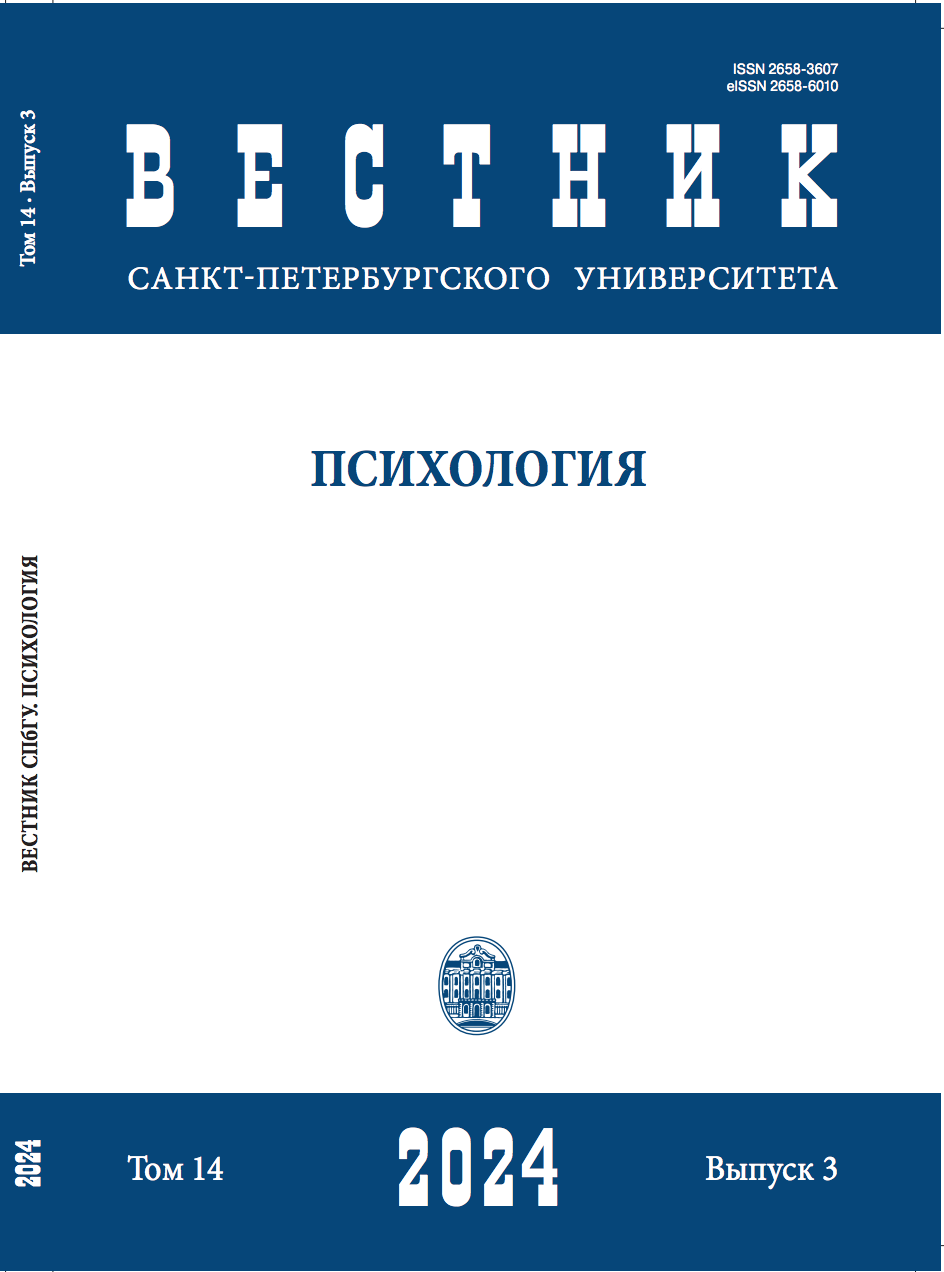Error-related negativity: dynamics of a neurocognitive sensitivity marker to decision mismatch in psychiatric disorders
DOI:
https://doi.org/10.21638/spbu16.2024.305Abstract
The transformation of methodological ideas about ERN as a significant neurocognitive marker for clarifying the mechanisms of development and maintenance of mental disorders are analyzed. The potential is registered in the anterior cingulate cortex 50–100 ms after making an error in the conflict task and acts as a neurocognitive indicator of sensitivity to decision mismatches. Comprehension of the provisions on the error monitoring system is discussed depending on the peculiarities of the clinical group definition, different conditions of activity (error of another or one’s own, motivational significance, attitude to accuracy, uncertainty, awareness of the error and other), as well as individual-typological characteristics. The significance of the error monitoring system in the context of the transition from a categorical to a dimensional approach to the classification of mental disorders is conceptualized, and inconsistencies in the data are discussed. ERN is considered as a modulation pattern of the internalisation-externalisation spectrum of psychopathology, acting as a dimensional psychopathological model that partially overcomes the problems of comorbidity. Based on the idea of defining ERN as a transdiagnostic electrophysiological marker of mental health, highly comorbid disorders, the problem of comparing the features of the error monitoring system in anxiety and psychotic disorders is analyzed. Studies show specific strengthening of the ERN in anxiety disorders and weakening in psychosis, but some components of the ERN in psychotic disorders may remain preserved, and under certain conditions of activity, error detection is intact. The qualitative rearrangements in the error monitoring system in psychosis reveal a more complex psychological structure of error identification than the observation of a decline in this ability.
Keywords:
Error-related negativity (ERN), social anxiety disorder, error monitoring system, obsessive-compulsive disorder, psychotic disorder, internalizing — externalizing mental disorders, dimensional approach
Downloads
References
References
Downloads
Published
How to Cite
Issue
Section
License
Articles of "Vestnik of Saint Petersburg University. Psychology" are open access distributed under the terms of the License Agreement with Saint Petersburg State University, which permits to the authors unrestricted distribution and self-archiving free of charge.




